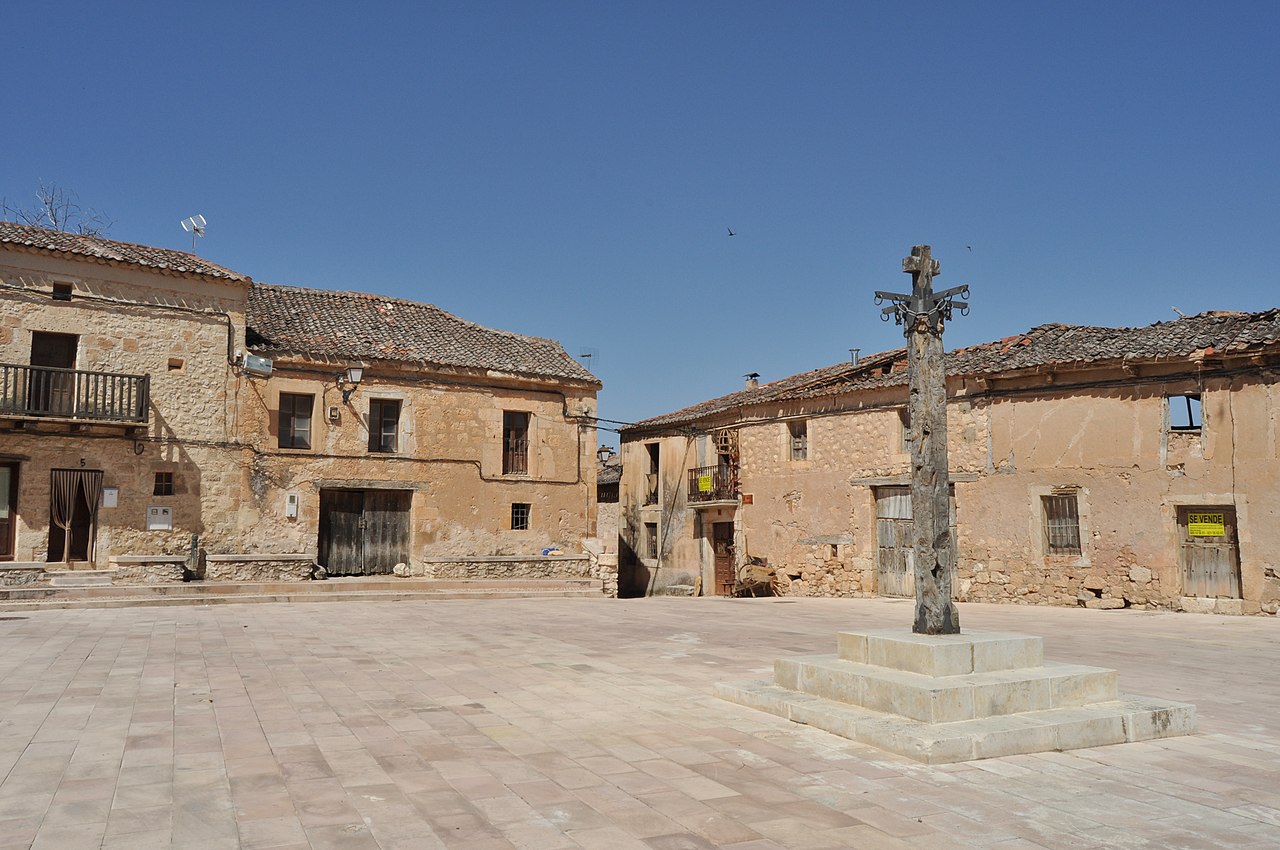
Maderuelo
The Segovian town of Maderuelo is located on a hill at the beginning of the Scyces of the Riaza River and surrounded by the Linares reservoir. It lived its time of splendor in the XNUMXth century, after being repopulated two hundred years earlier as a border area between Christians and Muslims. Then it fell into decline. But it has managed to preserve its medieval appearance and a privileged environment.
For all this, it is Historical-Artistic Set and a magical place that you must visit if you travel to the province of Segovia. As an anecdote, we will tell you that the series 'Tierra de lobos' was filmed there. If you want to know it, we are going to guide you through its most outstanding places.
What to see in Maderuelo
The monuments of Maderuelo respond mainly to the Romanesque art. However, as border territory that it was, they are also appreciated in them Mudejar elements. We are going to show you the most outstanding ones.
Arch of the Villa de Maderuelo
O entrance door to Maderuelo to the west, it is found in one of the few sections of the medieval wall that are currently preserved. It is an access in the form of a vault that, externally, shows a semicircular arch. It still has the postern, a smaller opening that led to the moat, as well as the thick wooden doors and bolts.
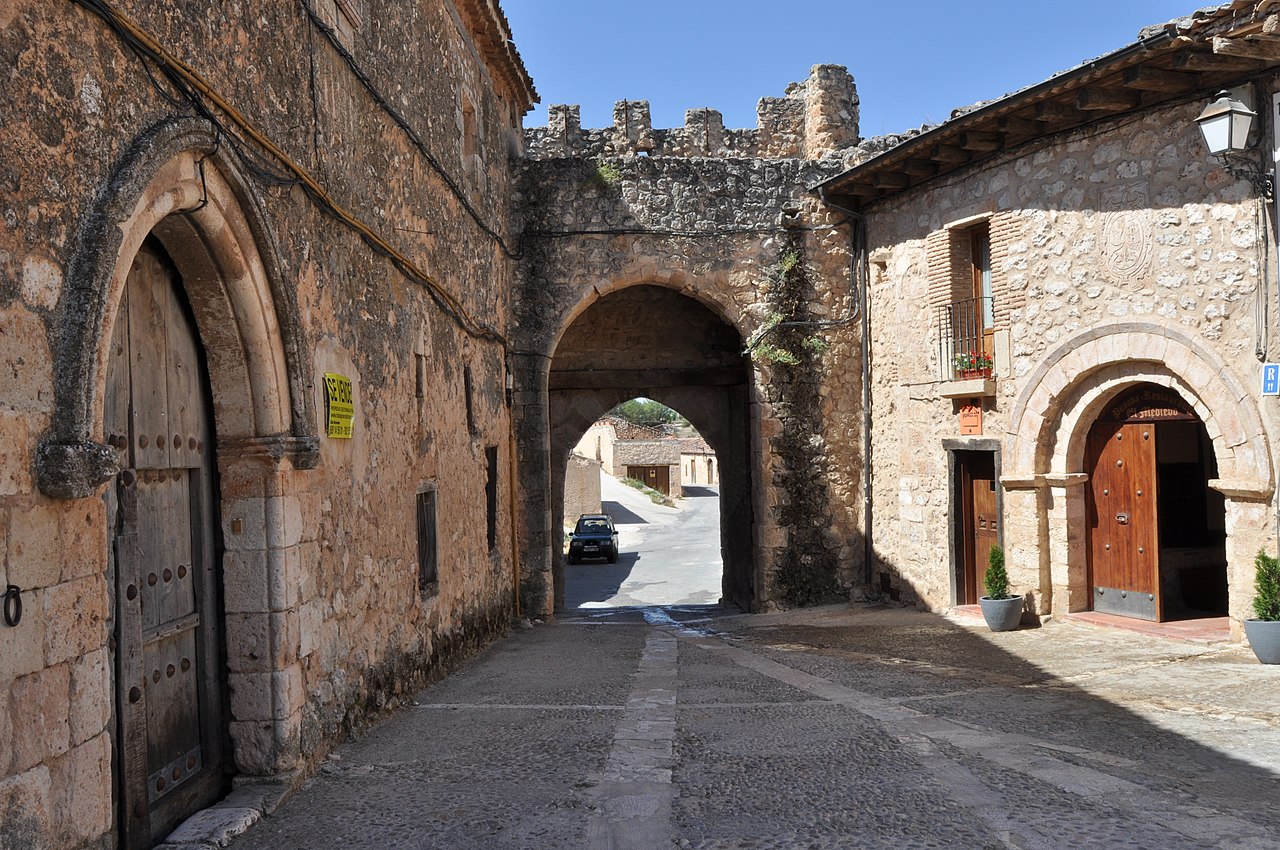
Arch of the Villa
St. Michael's Square
Once in the village, you will arrive at this square, framed by medieval houses. The façade of two of them is Romanesque and that of a third is Gothic. Also, in one you will see the coat of arms of the Villena house, which responds to the rococo canons.
Church of San Miguel
The walls of this construction served as a wall in the western part of Maderuelo. It is a temple Romanesque built on a previous hermitage of which the circular bell tower has been preserved. In addition, in the XNUMXth century another rectangular nave was added culminating in a small bulrush. Inside, very sober, you will find Gothic arches and various burials of illustrious families in the area.
Iglesia de Santa Maria
Built with a mixture of ashlar, brick and masonry, it is a true melting pot of architectural styles. But, above all, it is the only temple in the entire province of Segovia that preserves elements of caliphal style. It imposes the height of its central nave, which is also topped by a belfry with five bells. The Mudejar windows on one of its sides also stand out. Under its atrium are the alcacer and the barbican, which had a defensive function for the population.
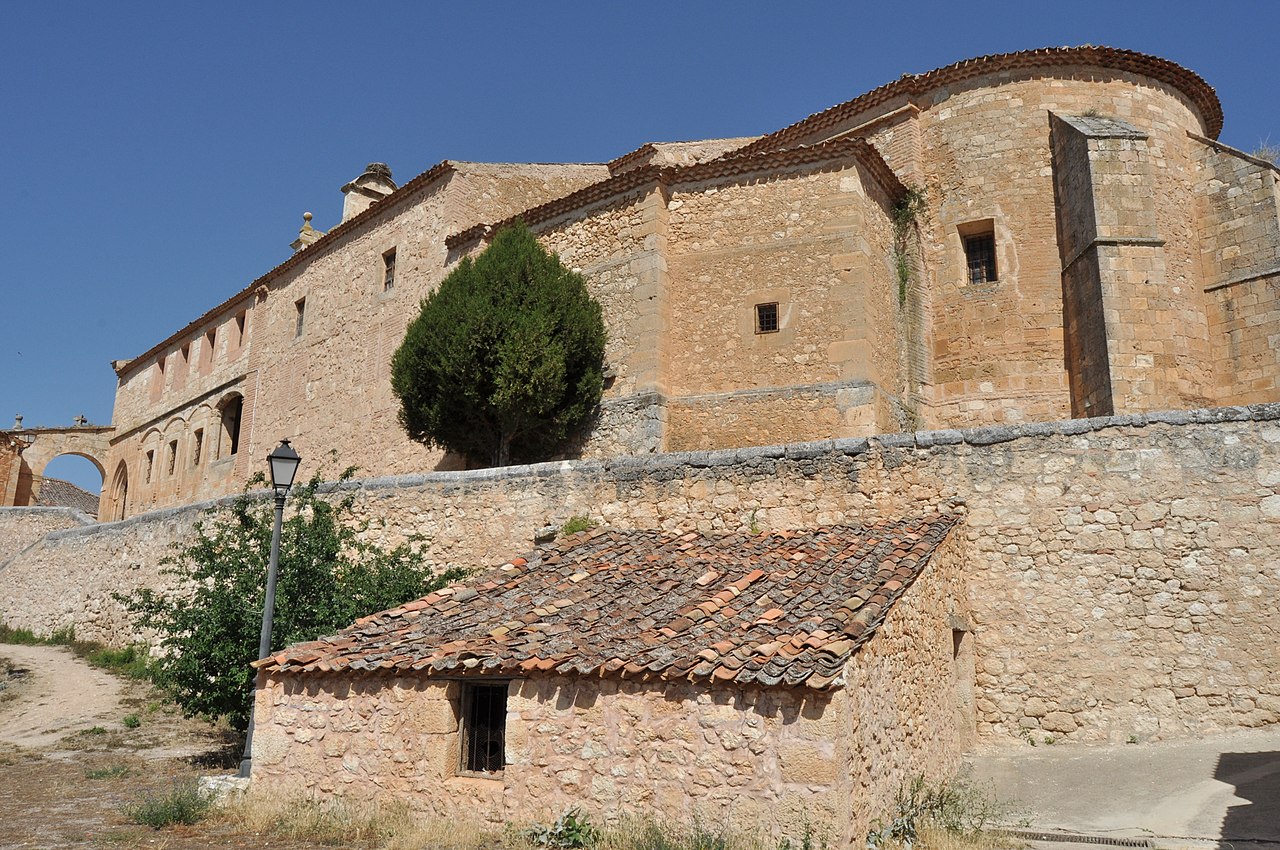
Church of Santa Maria and Barbican
Castle tower
It is the last vestige of the castle that guarded the access from the north. However, you can still observe the square layout of the fortress. In addition, in the subsoil of it you can see a cistern. Since 1949 it is A Cultural.
Door of the Neighborhood
So called because it was the access to the Jewish quarter of Maderuelo, it was also the entrance to the town along the path that rises from the Moralejos stream. It is a vaulted access with two semicircular arches at its ends. Also, attached to the door, you will see a building that formerly served as Vigilance tower and that also served as a pilgrims' hostel.
Monuments around Maderuelo
Also outside the village you can see monuments of great value. It is the case of Old Bridge, which some experts consider to be from Roman times, although it seems rather medieval. It is partially hidden by the waters of the Linares reservoir. Therefore, to see it well, you have to go during the dry season.
Likewise, outside Maderuelo is the hermitage of Veracruz, cataloged as National Monument since 1924. It responds to the way of building of the Templars and inside there was one of the most important Romanesque pictorial ensembles in all of Castile. When the hermitage was expropriated to make the Linares reservoir, these frescoes were taken to the Prado Museum.
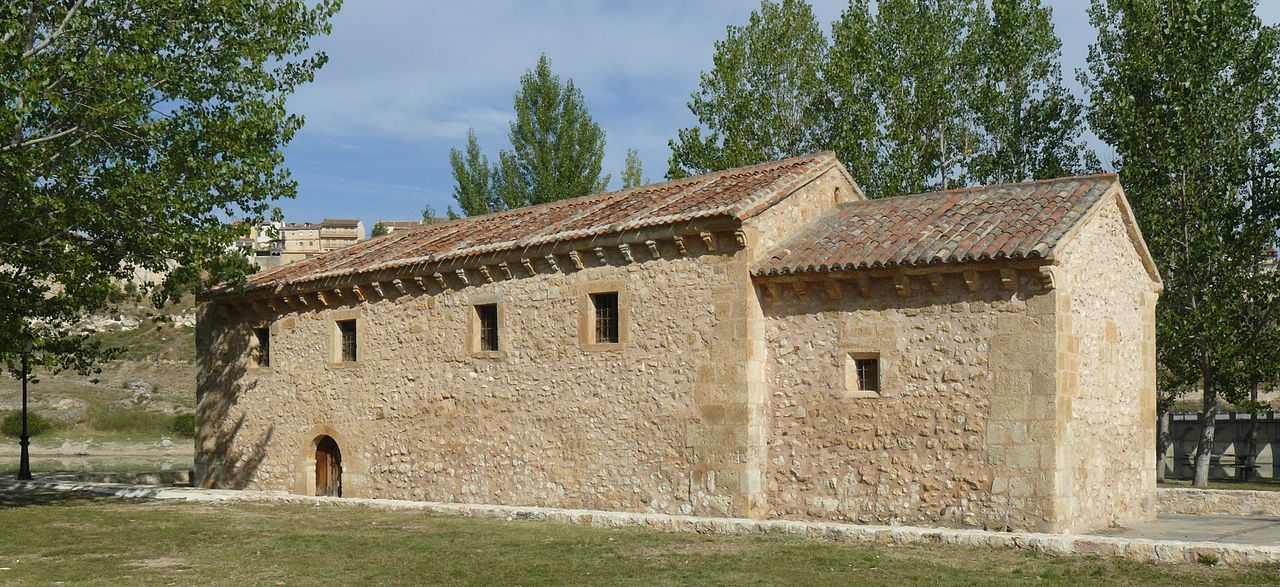
Ermita de la Veracruz
It is also worth getting close to the hermitage of Castroboda. It is from the XNUMXth century and was built by the residents themselves to serve as a temple for the town's patron saint.
Natural heritage
If rich is the monumental complex of Maderuelo, even more so is the natural one. As we have already told you, the town is surrounded by the Linares reservoir, where you can swim or go canoeing. But, above all, in the Segovian town the Natural Park of the Sickles of the Riaza River, with its imposing walls over the canyon. There are others in the province of Segovia, but perhaps these sickles are the most impressive.
The park has a huge botanical wealth in which trees such as elm, poplar and ash stand out, surrounded by riverside vegetation. But, fundamentally, it is a marvel from an ornithological point of view. In fact, it houses a raptor reserve, with one of the largest populations of griffon vulture in our country.
You can enjoy several hiking trails Around the area. One of the most affordable for its short route (barely five kilometers) is the circular one that starts and ends in Maderuelo, traveling along the left bank of the Riaza. Another option is the route that starts from the town and ends at the Hornuez hermitage.
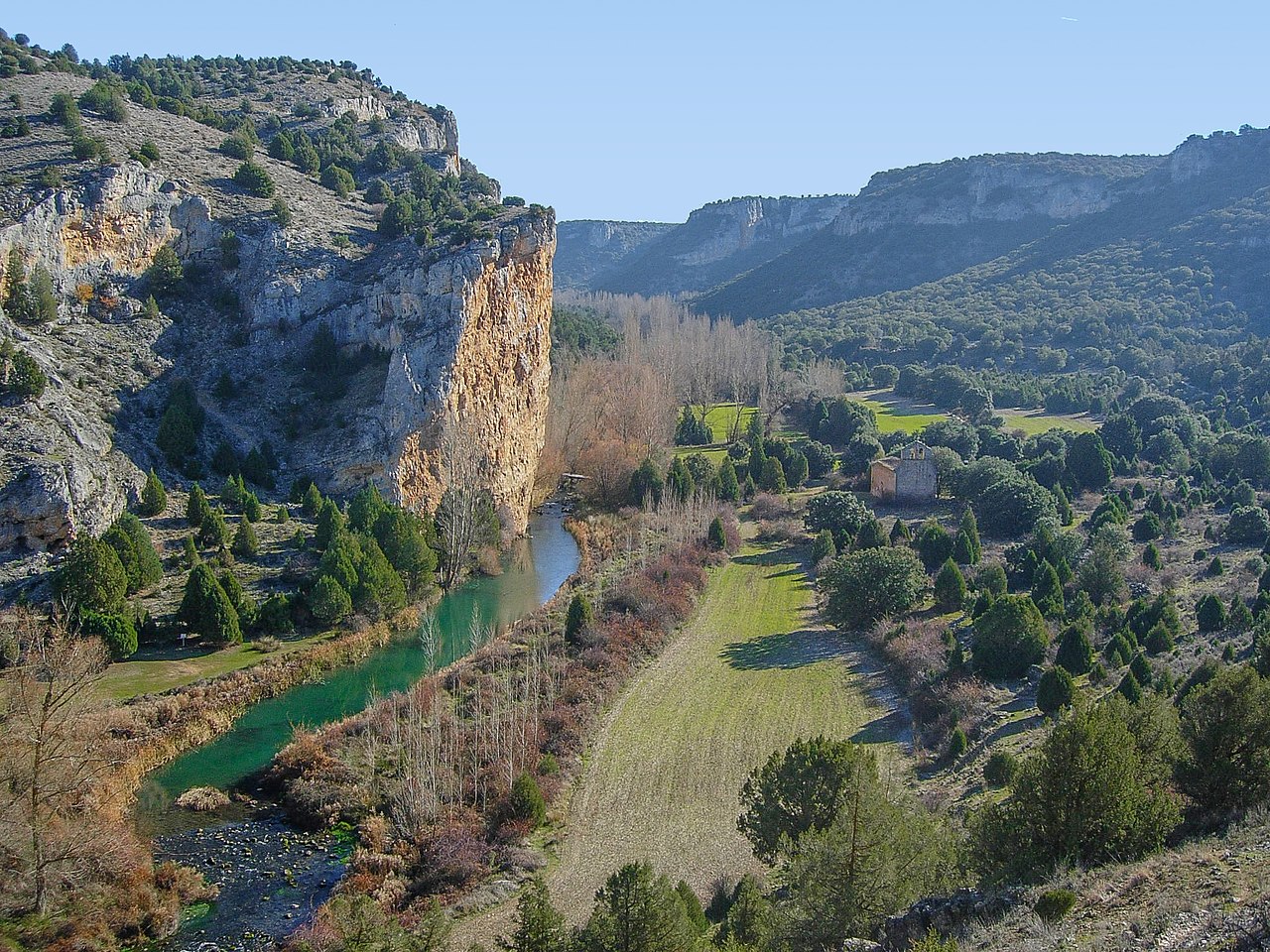
Natural Park of the Sickles of the Riaza River
What to eat in Maderuelo
One of the main current means of subsistence of the Segovian town is tourism. Therefore, it has several rural hotels and restaurants. The gastronomy of the area coincides with that of the entire province of Segovia, with dishes such as the little pig or the roast lamb, the Cooked beans from La Granja or the segovian trout.
You will also find in the village magnificent homemade sausages, seasonal mushroom scrambled eggs or some delicious pig's trotters. And, for dessert, savor a good Ponche Segoviano, which is not a drink, but an exquisite cake that has sponge cake with syrup, marzipan and cream.
What is the best time to visit Maderuelo
The Segovian town has a cold climate in winter. Some days temperatures of several degrees below zero are registered. The precipitations are not very abundant, but they are higher than those of the rest of Castile. On the other hand, summers are very hot, especially July and August, with average temperatures of almost thirty degrees Celsius. Therefore, the best dates to travel to Maderuelo are given in the months of April, May, September and October.
How to get to Maderuelo
If you travel in your car, you should know that the road that leads to the Segovian town is the SG-945 and that inside the villa you can park. On the other hand, if you prefer to travel by bus, you will have to get to Segovia capital first. From there you have a regular line, although it takes about two hours and there is only one daily journey. In addition, it leaves at 14 pm. Therefore, we do not recommend it for a tourist visit.
In conclusion, Maderuelo It is one of those towns that you have very close to your city and that deserve a visit. Go ahead and get closer to it and enjoy its surroundings and its monuments.